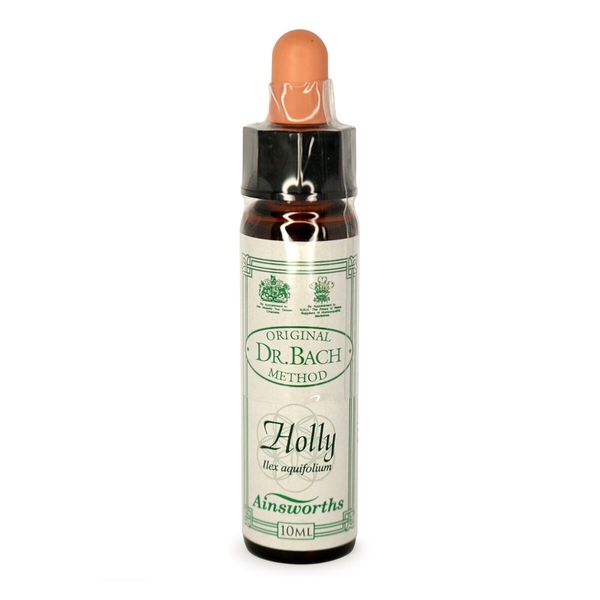
Holly
Scientific names: Ilex aquifolium, Ilex cassine, Ilex glabra, Ilex opaca, Ilex vomitoria
Family: Aquifoliaceae
Alternative names: Acebo, Agrifolio, Ailes de Chauve-Souris, American Holly, Appalachian Tea, Bitter Gallberry, Cardón, Cassena, Christ's Thorn, Dahoon Holly, English Holly, Épine du Christ, Evergreen Winterberry, Gallberry, Holm, Holme Chase, Holy Tree, Houx, Houx d'Amérique, Houx Commun, Hulm, Hulver Bush, Hulver Tree, Indian Black Drink, Inkberry, Oregon Holly, Yaupon, Yaupon Holly
Background
Holly is a plant. There are many types (species) of holly. English holly and American holly are used as ornamental Christmas greens. The leaves of these and other holly species are used to make medicine. The berries are very poisonous and should not be swallowed.
Historically, American holly fruit tea was used as a heart stimulant by American Indians. Yaupon, another type of holly, was used to cause vomiting, and Yaupon tea was used as a ceremonial "cleanser" in South America.
Holly is also used for cough, fever, digestive disorders, heart disease, and other conditions. But there is no good scientific research to support any use.
Historically, American holly fruit tea was used as a heart stimulant by American Indians. Yaupon, another type of holly, was used to cause vomiting, and Yaupon tea was used as a ceremonial "cleanser" in South America.
Holly is also used for cough, fever, digestive disorders, heart disease, and other conditions. But there is no good scientific research to support any use.
Safety Safety definitions
When taken by mouth: Holly BERRIES are poisonous and UNSAFE for use. Eating berries may be deadly.
There isn't enough reliable information available to know if holly LEAVES are safe to eat. The leaves can cause side effects such as diarrhea, nausea, vomiting, and stomach and intestinal problems. Swallowing holly leaf spines may tear or puncture the inside of the mouth and other parts of the digestive tract.
Children: Holly berries are UNSAFE. Eating holly berries can kill a child. Be sure to keep holly away from children.
Dehydration: In addition to being poisonous, holly berries can make dehydration worse because they cause vomiting and diarrhea.
Incorrect levels of chloride, calcium, magnesium, sodium, or potassium (electrolyte imbalance) in the body: In addition to being poisonous, holly berries can make an electrolyte imbalance worse because they cause vomiting and diarrhea.
There isn't enough reliable information available to know if holly LEAVES are safe to eat. The leaves can cause side effects such as diarrhea, nausea, vomiting, and stomach and intestinal problems. Swallowing holly leaf spines may tear or puncture the inside of the mouth and other parts of the digestive tract.
Special Precautions & Warnings:
Pregnancy and breast-feeding: Holly berries are UNSAFE to eat while pregnant or breast-feeding. They can kill you. There isn't enough reliable information to know if holly leaves are safe to use when pregnant or breast-feeding. Stay on the safe side and avoid use.Children: Holly berries are UNSAFE. Eating holly berries can kill a child. Be sure to keep holly away from children.
Dehydration: In addition to being poisonous, holly berries can make dehydration worse because they cause vomiting and diarrhea.
Incorrect levels of chloride, calcium, magnesium, sodium, or potassium (electrolyte imbalance) in the body: In addition to being poisonous, holly berries can make an electrolyte imbalance worse because they cause vomiting and diarrhea.
Effectiveness
NatMed Pro rates effectiveness based on scientific evidence according to the following scale: Effective, Likely Effective, Possibly Effective, Possibly Ineffective, Likely Ineffective, Ineffective, and Insufficient Evidence to Rate.
Insufficient evidence Effectiveness definitions
- Constipation.
- Coughs.
- Digestive disorders.
- Dizziness (vertigo).
- Fever.
- Heart disease.
- Heart failure and fluid build up in the body (congestive heart failure or CHF).
- High blood pressure.
- Rheumatoid arthritis (RA).
- Yellowing of the skin (jaundice).
- Other conditions.
Dosing & administration
The appropriate dose of holly depends on several factors such as the user's age, health, and several other conditions. At this time there is not enough scientific information to determine an appropriate range of doses for holly. Keep in mind that natural products are not always necessarily safe and dosages can be important. Be sure to follow relevant directions on product labels and consult your pharmacist or physician or other healthcare professional before using.
Interactions with pharmaceuticals
It is not known if Holly interacts with any medicines. Before taking Holly, talk with your healthcare professional if you take any medications.
Interactions with herbs & supplements
There are no known interactions with herbs and supplements.
Interactions with foods
There are no known interactions with foods.
Action
There isn't enough information available to know how holly works.
vital.ly has licensed monographs from TRC Healthcare.
This monograph was last reviewed on 12/09/2024 10:00:00 and last updated on 23/10/2022 08:30:53. Monographs are reviewed and/or updated multiple times per month and at least once per year.
Natural Medicines disclaims any responsibility related to medical consequences of using any medical product. Effort is made to ensure that the information contained in this monograph is accurate at the time it was published. Consumers and medical professionals who consult this monograph are cautioned that any medical or product related decision is the sole responsibility of the consumer and/or the health care professional. A legal License Agreement sets limitations on downloading, storing, or printing content from this Database. No reproduction of this monograph or any content from this Database is permitted without written permission from the publisher. It is unlawful to download, store, or distribute content from this site.



